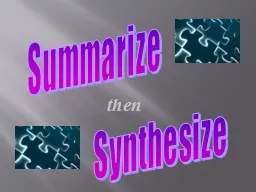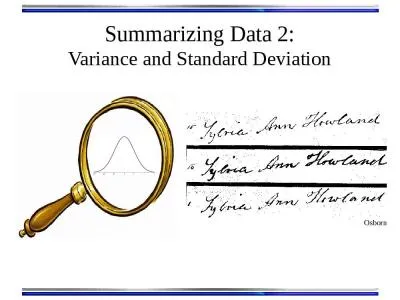PPT-Lecture 2 Summarizing the Sample
Author : alida-meadow | Published Date : 2018-02-26
WARNING Todays lecture may bore some of you Its sort of not my faultIm required to teach you about what were going to cover today Ill try to make it as exciting
Presentation Embed Code
Download Presentation
Download Presentation The PPT/PDF document "Lecture 2 Summarizing the Sample" is the property of its rightful owner. Permission is granted to download and print the materials on this website for personal, non-commercial use only, and to display it on your personal computer provided you do not modify the materials and that you retain all copyright notices contained in the materials. By downloading content from our website, you accept the terms of this agreement.
Lecture 2 Summarizing the Sample: Transcript
Download Rules Of Document
"Lecture 2 Summarizing the Sample"The content belongs to its owner. You may download and print it for personal use, without modification, and keep all copyright notices. By downloading, you agree to these terms.
Related Documents














